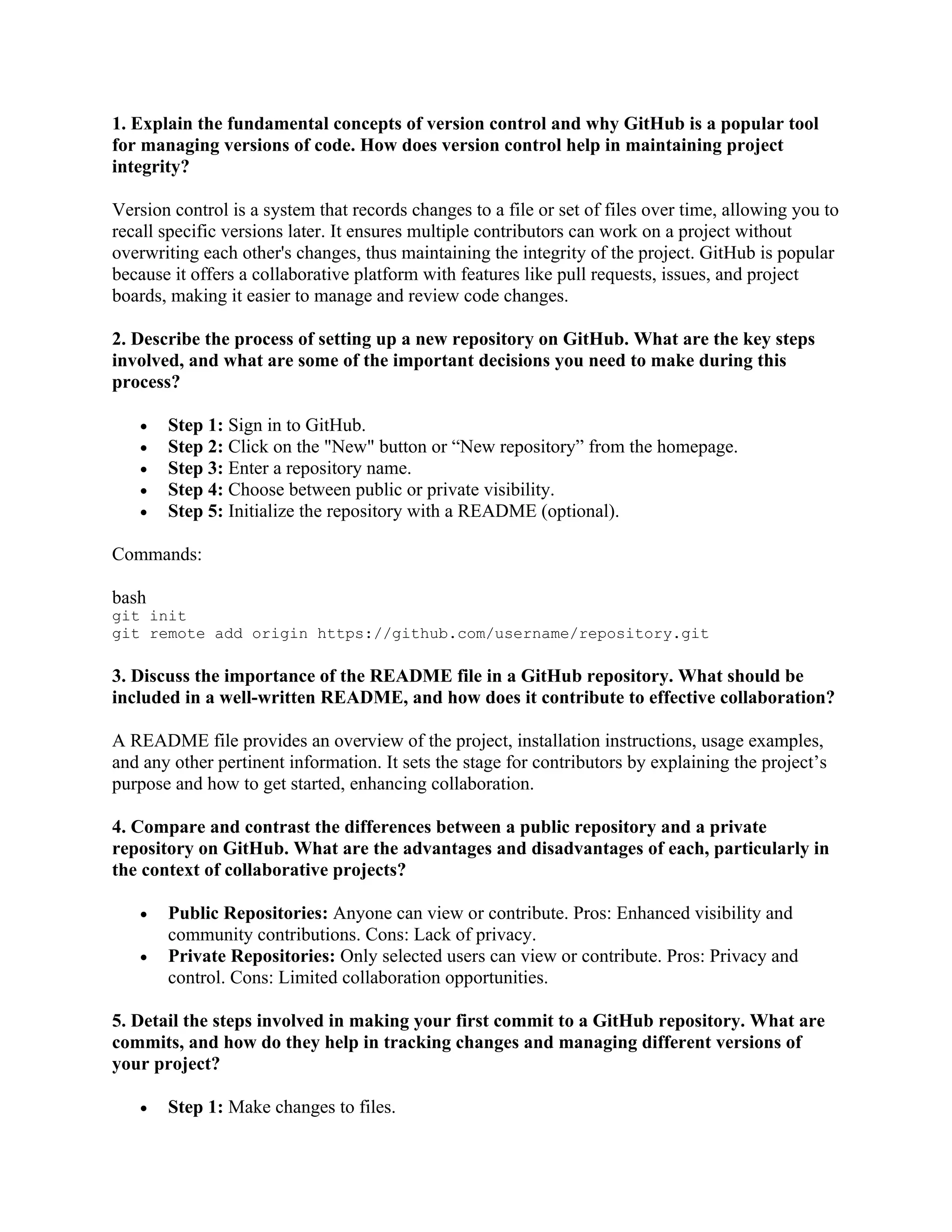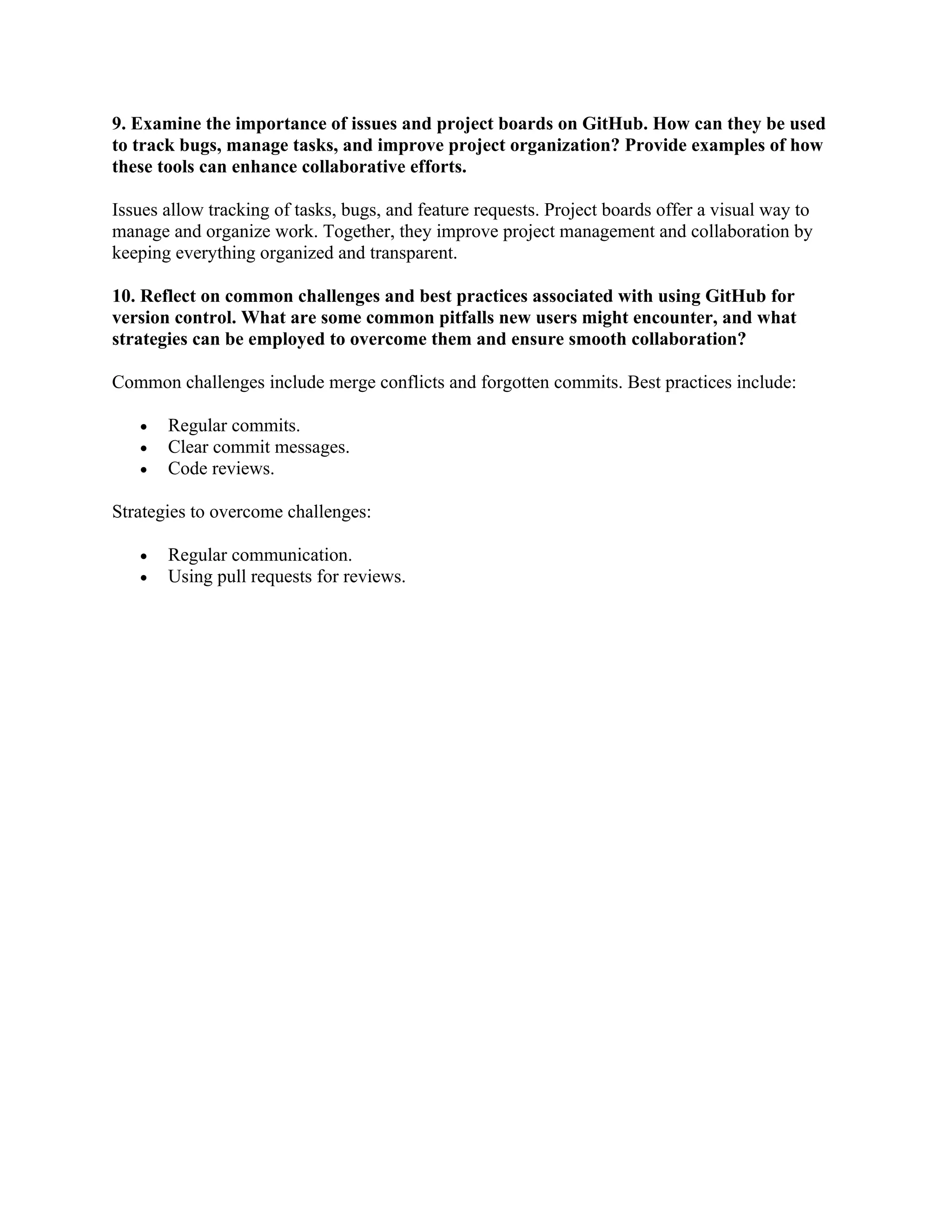The document outlines the fundamentals of version control and the role of GitHub as a management tool, emphasizing its collaborative features. It covers the setup of repositories, the importance of README files, the differences between public and private repositories, and the process of making commits and using branches. Additionally, it discusses pull requests, forking, issue tracking, project organization, and common challenges faced when using GitHub, along with best practices to enhance collaboration.


